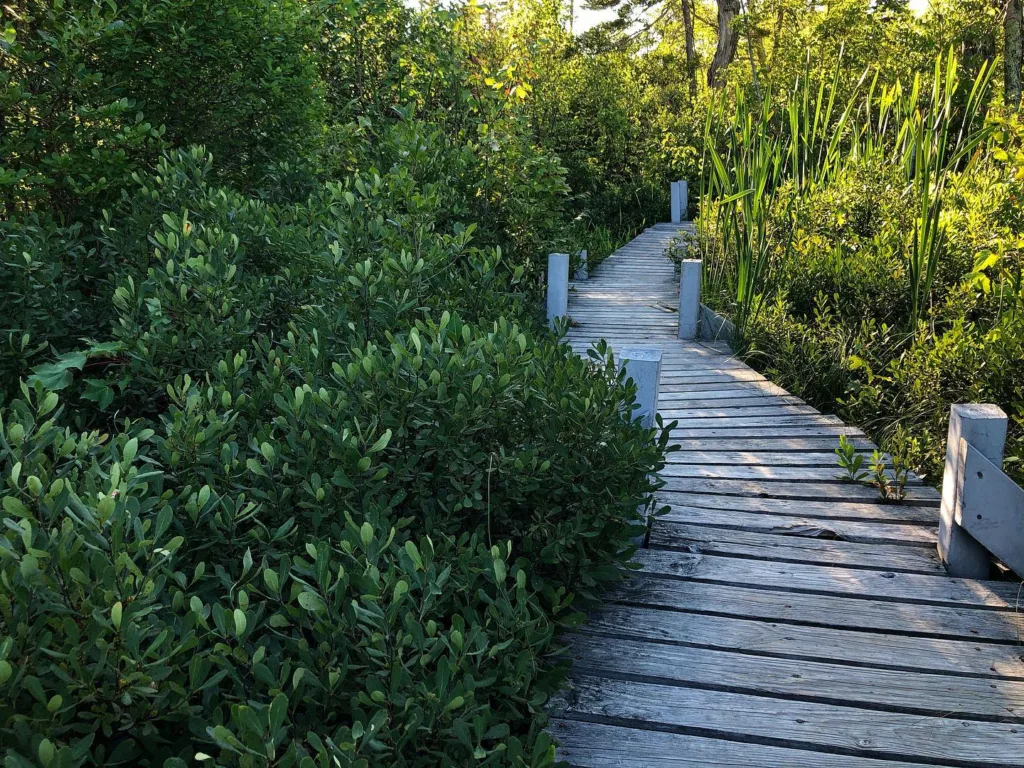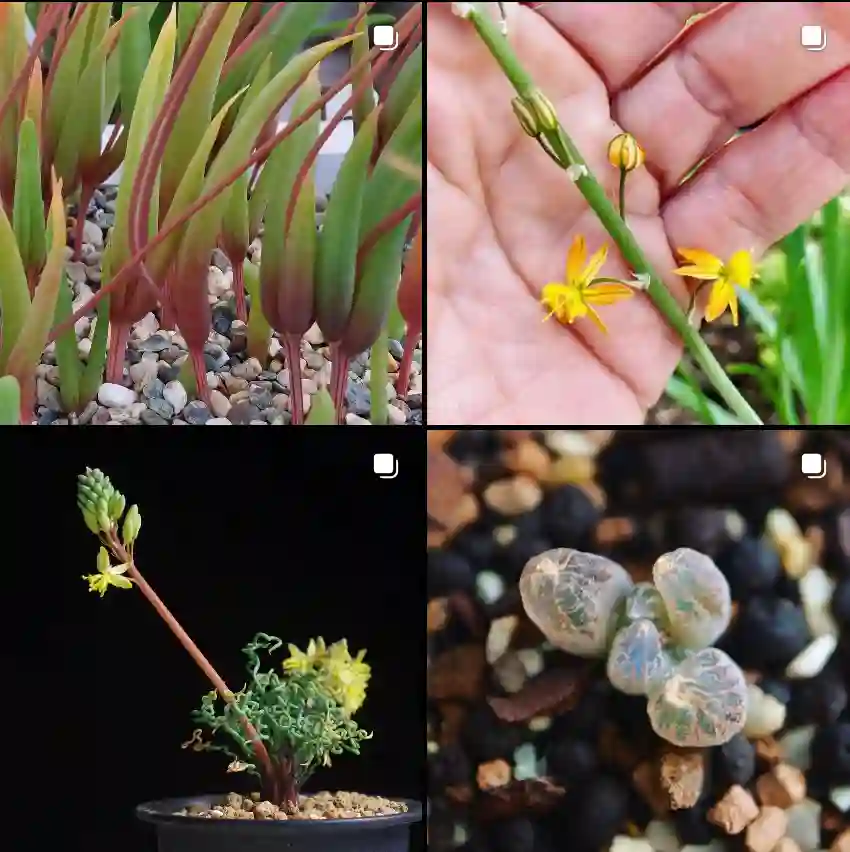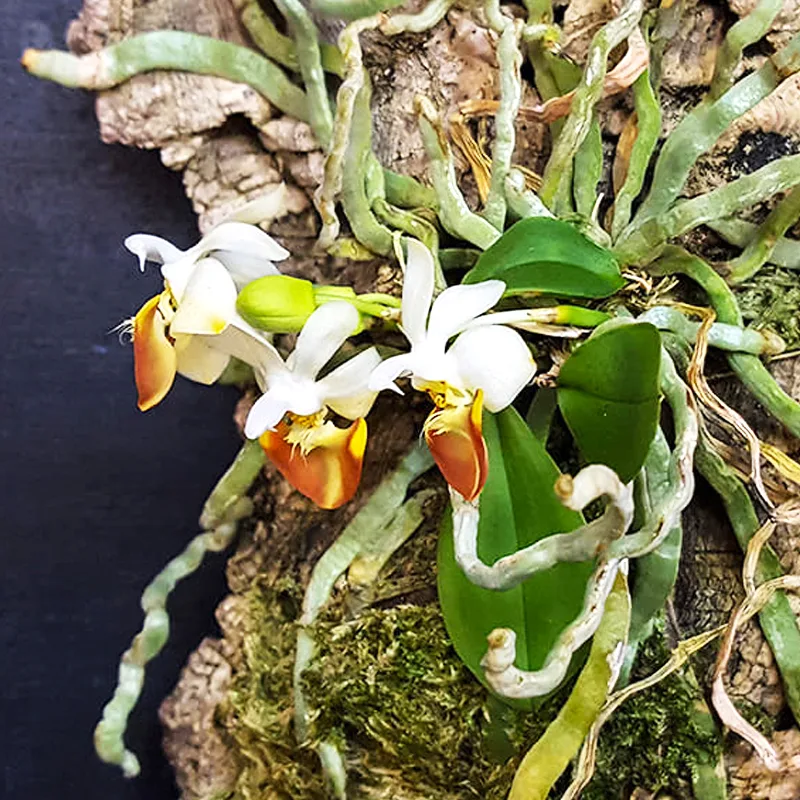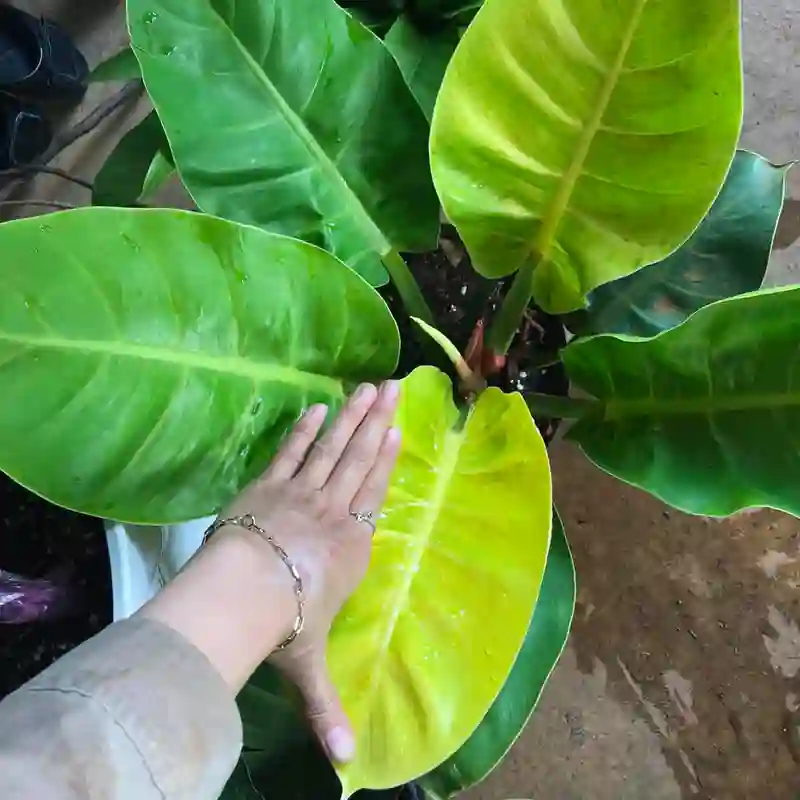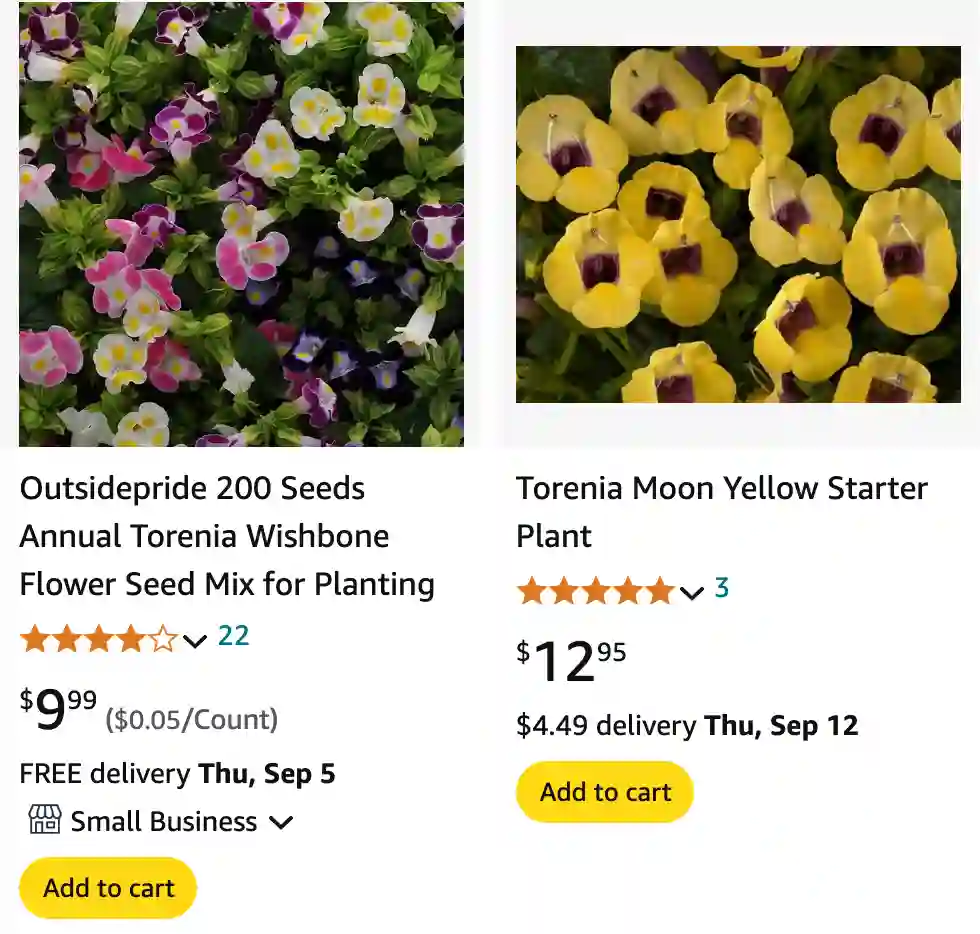
August 1 – Torenia
"Torenia, the wishbone flower, defines August 1."
Torenia symbolizes joy and partnership. You have a playful, lively nature that brings happiness to those around you. Like its cheerful blooms, your presence is heartwarming and uplifting.
What is Torenia?
I’ve always been drawn to the vibrant hues and delicate forms of Torenia, genus belong to the Linderniaceae family. These charming plants, often referred to as wishbone flowers, bring a touch of whimsy and color to any garden. Their unique floral structure, with two prominent stamens resembling a wishbone, is a testament to nature’s artistry.
My fascination with Torenia began with a chance encounter at a local nursery. Nestled amongst the more common bedding plants, a pot of vibrant blue Torenia fournieri caught my eye. The intricate blooms, with their contrasting yellow throats, seemed to beckon me closer. I was instantly captivated.
Since that day, I’ve made it my mission to learn as much as I can about these captivating plants. I’ve experimented with different species, cultivated them from seed, and even attempted hybridization. Each new bloom brings a sense of joy and accomplishment.
A Diverse Genus
The Torenia genus encompasses a diverse array of species, each with its own unique characteristics. Here are:
- Torenia anagallis (Burm.f.) Wannan, W.R.Barker & Y.S.Liang
- Torenia asiatica L.
- Torenia benthamiana Hance
- Torenia bicolor Dalzell
- Torenia bimaculata Ridl.
- Torenia biniflora T.L.Chin & D.Y.Hong
- Torenia blancoi Merr.
- Torenia burttiana R.R.Mill
- Torenia caelestis Ridl.
- Torenia cambodgiana Bonati
- Torenia celebica T.Yamaz.
- Torenia chevalieri Bonati
- Torenia ciliaris Sm.
- Torenia concolor Lindl.
- Torenia cordata (Griff.) N.M.Dutta
- Torenia cordifolia Roxb.
- Torenia courtallensis Gamble
- Torenia crenata (Pennell) Pennell
- Torenia crustacea (L.) Cham. & Schltdl.
- Torenia cyanea Alston
- Torenia cyrtandriflora B.L.Burtt
- Torenia daubyi Eb.Fisch. & O.Lachenaud
- Torenia davidii Eb.Fisch., Schäferh. & Kai Müll.
- Torenia dictyophora (P.C.Tsoong) Eb.Fisch., Schäferh. & Kai Müll.
- Torenia diffusa D.Don
- Torenia dinklagei Engl.
- Torenia flava Buch.-Ham. ex Benth.
- Torenia fordii Hook.f.
- Torenia fournieri Linden ex E.Fourn.
- Torenia godefroyi Bonati
- Torenia grandiflora (Merr.) Eb.Fisch., Schäferh. & Kai Müll.
- Torenia hayatae Bonati
- Torenia hirsuta Willd.
- Torenia hirsutissima Bonati
- Torenia hookeri (C.B.Clarke ex Hook.f.) A.Pal & M.Chowdhury
- Torenia indica C.J.Saldanha
- Torenia javanica T.Yamaz.
- Torenia kinmenensis (Y.S.Liang, Chih H.Chen & J.L.Tsai) Y.S.Liang & J.C.Wang
- Torenia laotica Bonati
- Torenia leucosiphon Alston
- Torenia maculata (Bonati) Y.F.Deng
- Torenia mannii Skan
- Torenia molluginoides (Benth.) Eb.Fisch., Schäferh. & Kai Müll.
- Torenia oblonga (Benth.) Hance
- Torenia patens Pennell
- Torenia perennans (T.Yamaz.) Eb.Fisch., Schäferh. & Kai Müll.
- Torenia philcoxii Eb.Fisch., Schäferh. & Kai Müll.
- Torenia pierreana Bonati
- Torenia pierreanoides (T.Yamaz.) Eb.Fisch., Schäferh. & Kai Müll.
- Torenia poilanei Bonati
- Torenia polygonoides Benth.
- Torenia pterogona (T.Yamaz.) Eb.Fisch., Schäferh. & Kai Müll.
- Torenia ranongensis T.Yamaz.
- Torenia scandens Bonati
- Torenia siamensis T.Yamaz.
- Torenia siliguriensis A.Pal & M.Chowdhury
- Torenia silvicola A.Raynal
- Torenia spathacea (Bonati) Eb.Fisch., Schäferh. & Kai Müll.
- Torenia stolonifera Bojer ex Benth.
- Torenia subconnivens (Philcox) Eb.Fisch., Schäferh. & Kai Müll.
- Torenia taishanensis (F.Z.Li) Y.S.Liang & J.C.Wang
- Torenia thailandica T.Yamaz.
- Torenia thorelii Bonati
- Torenia thouarsii (Cham. & Schltdl.) Kuntze
- Torenia travancorica Gamble
- Torenia udawnensis (T.Yamaz.) Eb.Fisch., Schäferh. & Kai Müll.
- Torenia umbellata (T.Yamaz.) Eb.Fisch., Schäferh. & Kai Müll.
- Torenia vientianica T.Yamaz.
- Torenia violacea (Azaola) Pennell
How to Care for Torenia?
Caring for Torenia is relatively straightforward. The plant thrives in well-draining soil and prefers a consistent moisture level. It’s essential to avoid waterlogging, which can lead to root rot. Torenia also benefits from regular fertilization during its growing season to promote lush foliage and vibrant blooms.
How Much Sun Does Torenia Need?
One of the common questions I get is about sunlight requirements. Torenia does well in partial shade to full sun. However, in hotter climates, some afternoon shade can prevent the plant from becoming scorched. It’s a versatile plant that can adapt to various light conditions, making it ideal for both sunny and partially shaded areas.
Can Torenia Take Full Sun?
Yes, Torenia can handle full sun, but it does best in areas where it receives morning sun and some afternoon shade. In very hot climates, too much direct sunlight can cause the plant to wilt or the flowers to fade prematurely.
How to Deadhead Torenia?
Deadheading is crucial for keeping Torenia blooming profusely. To deadhead Torenia, simply pinch off the spent blooms at the base of the flower stem. This practice encourages the plant to produce more flowers and helps maintain its overall appearance.
Is Torenia a Perennial?
Torenia is typically grown as an annual in most regions due to its sensitivity to frost. However, in warmer climates where frost is not an issue, it can act as a perennial. Its longevity largely depends on the local climate and care practices.
How to Propagate Torenia
If you want to propagate Torenia, the best method is through seeds. Start seeds indoors about 8-10 weeks before the last frost date. Plant the seeds in seed-starting mix and keep them warm and moist until germination. Transplant the seedlings outdoors after all danger of frost has passed.
What to Plant With Torenia?
Torenia pairs well with a variety of other plants. I find that it complements other shade-tolerant plants like Begonias, Impatiens, and Coleus. For a mixed container, you can combine Torenia with trailing plants such as Creeping Jenny or trailing Petunias for a stunning display.
Is Torenia Toxic to Dogs?
No, Torenia is not toxic to dogs. It’s safe to have around pets, but as always, it’s a good idea to prevent pets from chewing on plants to avoid any potential digestive upset.
Are Torenia Poisonous to Cats?
Torenia is generally considered non-toxic to cats as well. However, if you notice your cat showing unusual behavior or signs of distress after interacting with the plant, it’s best to consult with a veterinarian.
Do Deer Eat Torenia?
Deer typically avoid Torenia. The plant’s strong scent and less appealing foliage make it less attractive to these animals compared to other garden plants.
Do Rabbits Eat Torenia?
Similar to deer, rabbits usually steer clear of Torenia. Its texture and taste are not favored by these critters, making it a good choice for gardens that are prone to rabbit activity.
Do Hummingbirds Like Torenia?
Yes, hummingbirds are attracted to Torenia’s vibrant blooms. The plant’s tubular flowers offer a good source of nectar, making it a great addition to a garden designed to attract these delightful birds.
Is Torenia Flower Edible?
Torenia flowers are not commonly consumed and are not noted for being edible. While not toxic, they are generally grown for ornamental purposes rather than culinary use.
Torenia vs. Nemesia
Torenia and Nemesia are often compared due to their similar appearances and growing conditions. Both offer bright, colorful blooms and thrive in partial shade. However, Torenia tends to have a more trailing growth habit, making it ideal for containers and hanging baskets. Nemesia, on the other hand, typically grows more upright and may require more sun. Choosing between them often comes down to specific garden needs and personal preference.
Common Problems with Torenia
One issue I’ve encountered with Torenia is fungal infections, especially in overly moist conditions. Ensuring good air circulation and avoiding overhead watering can help prevent these issues. Additionally, keeping an eye out for pests like aphids and spider mites can prevent potential problems.
Torenia is a versatile and beautiful plant that can bring vibrant color to a range of garden settings. Whether you’re a seasoned gardener or a novice, understanding these aspects of Torenia will help you enjoy its beauty throughout the growing season.
If i die, water my plants!
